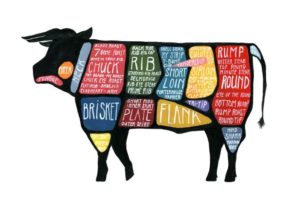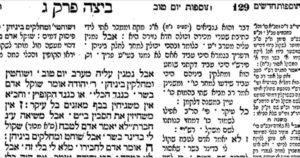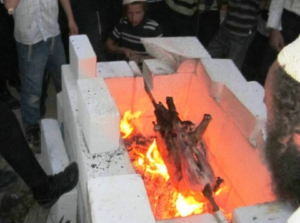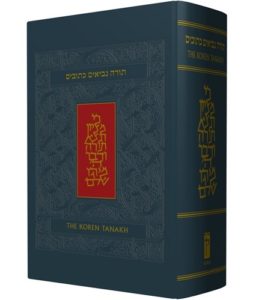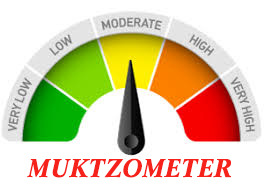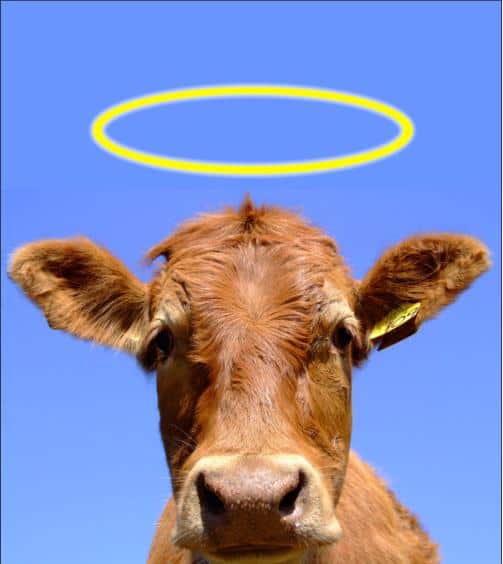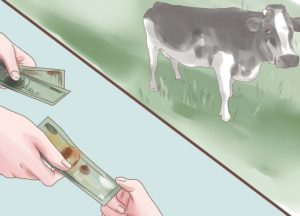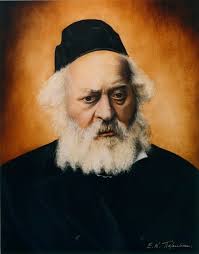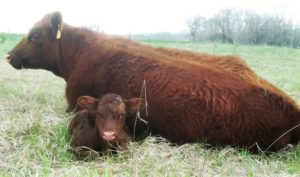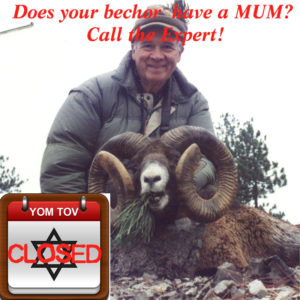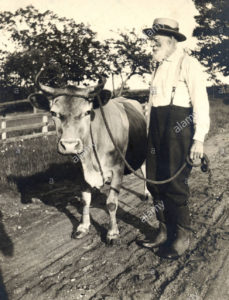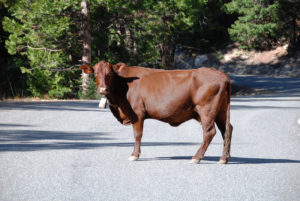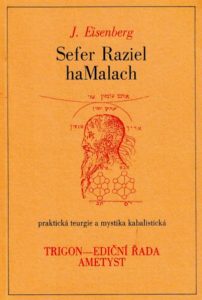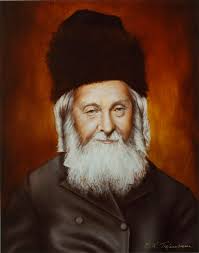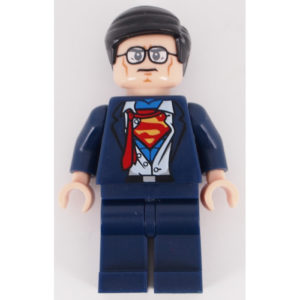Beitza 27b – 28a
1- The Mishnah discusses laws of buying a portion of an animal to be slaughtered for, or on Yom Tov. Clarifying the the phrase in the Mishnah אין נמנין is explained to mean that it is not permitted to set a price for an animal on Yom Tov. Rav presents a method to set the price of an animal without violating the prohibition, by placing a second animal and comparing side by side.
2-We discussed as to why the Mishna needs to state this Halacha when apparently all type of commerce is prohibited on Yom Tov?
The תפארת ישראל notes that business discussions are prohibited because we are afraid that a person may come to write down calculations.
Top line, Right side
So what does this Mishna add to what is known from many other places?
His answer: We might have thought that this is not a problem when we are dealing with a group of people.
As We find (Shabbos 20a) that a Korban Pesach may be lowered into an oven as Shabbos begins, and we do not prohibit it despite the standard concern that a person might stir the coals. This is because the Pesach is always brought by a group of people, and if one might forget and try to stir the coals, others will remind him not to do it on Shabbos. Thanks to Eli Chitrik for pointing out לא קורין לאור הנר וכו
ודוקא אחד אבל ב’ קורין ביחד וכו” .
Here, too, perhaps mentioning money among a group would be allowed, because the chance this may lead to writing would be alleviated by the fact that we have a group.
We might have thought that this is not a problem when we are dealing with a group of people.
The novel ruling of the Mishnah is that even here we do not allow mentioning money.
3- In our Gemara we see that Rashi writes that the prohibition of conducting business on Shabbos and Yom Tov is derived from a Posuk in ‘Ezra’ although the פסוק is in Nechemia!
טו בַּיָּמִים הָהֵמָּה רָאִיתִי בִיהוּדָה דֹּרְכִים גִּתּוֹת בַּשַּׁבָּת, וּמְבִיאִים הָעֲרֵמוֹת וְעֹמְסִים עַל הַחֲמֹרִים, וְאַף יַיִן עֲנָבִים וּתְאֵנִים וְכָל מַשָּׂא, וּמְבִיאִים יְרוּשָׁלִַם בְּיוֹם הַשַּׁבָּת, וָאָעִיד בְּיוֹם מִכְרָם צָיִד. טז וְהַצֹּרִים יָשְׁבוּ בָהּ מְבִיאִים דָּאג וְכָל מֶכֶר, וּמֹכְרִים בַּשַּׁבָּת לִבְנֵי יְהוּדָה וּבִירוּשָׁלִָם. יז וָאָרִיבָה אֵת חֹרֵי יְהוּדָה, וָאֹמְרָה לָהֶם: “מָה הַדָּבָר הָרָע הַזֶּה אֲשֶׁר אַתֶּם עֹשִׂים וּמְחַלְּלִים אֶת יוֹם הַשַּׁבָּת? יח הֲלוֹא כֹה עָשׂוּ אֲבֹתֵיכֶם, וַיָּבֵא אֱלֹהֵינוּ עָלֵינוּ אֵת כָּל הָרָעָה הַזֹּאת וְעַל הָעִיר הַזֹּאת, וְאַתֶּם מוֹסִיפִים חָרוֹן עַל יִשְׂרָאֵל לְחַלֵּל אֶת הַשַּׁבָּת!”. {פ}
We discussed the gloss written by Reb Akiva Eiger about this Rashi.
In short: The two books of Ezra and Nechemia, despite them being printed and labeled today as two separate ספרים, are in actuality only one ספר of the 24 in the תנ”ך.
This single ספר has the story of Ezra as well as Nechemia. So it would make sense for Nechemia to have his own ספר.
The Gemara in Sanhedrin, 93b addresses this issue and explains that Nechemia was punished and didn’t merit to have his ספר called in his own name.
Hence, all references in Sha’s to a פסוק in (what today we call) נחמיה are written as עזרא.
The partition of Ezra into two books is not of Jewish origin. Much like the partition of Shmuel into two books. The first time the split shows up in our mesorah, is in Venice, in the Bomberg edition of 1525.
The Alter Rebbe in אגרת התשובה 11 also refers a posuk in (what today we call) נחמיה as עזרא
ומה שמשבחים ומברכים את ה’: “חנון המרבה לסלוח”, “המרבה” דייקא, וכמו שכתוב בעזרא: “ורב לסלוח”, דהיינו שבמידת בשר ודם, אם יחטא איש לאיש וביקש ממנו מחילה ומחל לו ואחר כך חזר לסורו, קשה מאד שימחול לו שנית, ומכל שכן בשלישית ורביעית
The above is what Reb Akiva Eiger writes.
3- The next Mishnah and Gemara talk about weighing food on Yom Tov.
One interesting item is the prohibition for an expert butcher to lift a piece of meat and state its weight.

I mentioned what my father A”H once told me that the late Rabbi Breuer of the KJ Kehilla related him. His brother Moshe being a professor of Semitic languages, on Shabbos, he refrained during קריאת התורה to look at the תרגום אונקלוס that is written in Aramaic……
4- We learnt the next piece of Gemara. It is an interesting story with Halachic ramifications.![]()

The story relates of seven servings of fish were placed on the table in the house of Rebbi, and five of them ended up in the possession of Rebbi Chiya while only two made it into the hands of Rebbi Shimon b’Rebbi.
[Thank you Yankel Korolitzky who correctly pointed out that this Reb Chiya was not Rebbi’s son].
But Rebbi did indeed have a son name Chiya, See יבמות
46b
(Note: We know that a Rebbi Chiya was the uncle of Rav – from the story with R Moshe Feinstein, who referred to the story of Rebbi Chiya asking Rebbi to give his nephew Rav smicha, which he did but excluded Bechoros.
And we know that Rav was a talmid of Rebbi.
So this R Chiya, who was clearly not Rebbis son, based on the text of the Gemara, (“R Chiya, vR Shimon B’Rebbi”) perhaps it was the R Chiya who’s nephew Rav was a Talmud of Rebbi, and he would be getting fish from Rebbi, his contemporary, but not father…
Sanhedrin 5a
כי הוה נחית רבה בר חנה לבבל אמר ליה רבי חייא לרבי בן אחי יורד לבבל יורה יורה ידין ידין יתיר בכורות יתיר)
Rashi explains that Rebbi Chiya took five to his home without asking for permission to do so. Rebbi Shimon b’Rebbi was not upset that Rebbi Chiya took most of the fish, because he and Rebbi Chiya were friends.
We began talking on how the story above connects with the famous machlokes between Abaya and Rava about יאוש שלא מדעת.

In regards to cutting a handle into meat on Yom Tov, we also learned the somewhat unique way in which רבה בר רב הונא would cut and then send his meat in the hands of non-Jews.
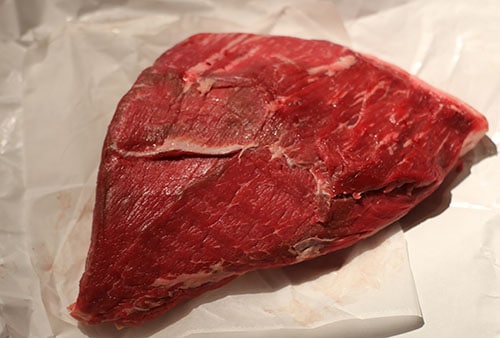
Which brings us to the question of the תוספות רי”ד :
אמר רב הונא מורת לעשות סימן בבשר כי הא דרבה בר רב הונא מחתך לה אתלת קרנתא פירש המוהר סימן בבשר שלא יחלפנו הנושאו ורבה כשהי’ משלח בשר לביתו הי’ רגיל לעשות כל חתיכה בתלת קרנות וכבר הי’ מכירין אנשי ביתו שזה הי’ סימן שלו ובפ’ אלו מציאות פי’ שהיה עושה רבה סימן כשהיה שולחן ביד גוי ואינו נראה לי דאטו אם הי’ רוצה הנושאו להחליפו לא הי’ יודע לעשות גם הוא תלת קרנתא בחתיכה שלו שהיה רוצה להחליף בו ולא היה עושה סימן זה אלא בעבור העורבים דסביר אליה כרב דאמר בשר כיון שנעללם מן העין אסור דחיישי’ שמא החליפה העורבים ובעבור זה הי’ מסמנין על תלת קרנתא שמא יעלימו בני ביתו עינם ממנו ויאסר ועיין בפ’ אלו מציאות מהדורא קמא ובתשובות:
Interesting stuff next week IY”H.
